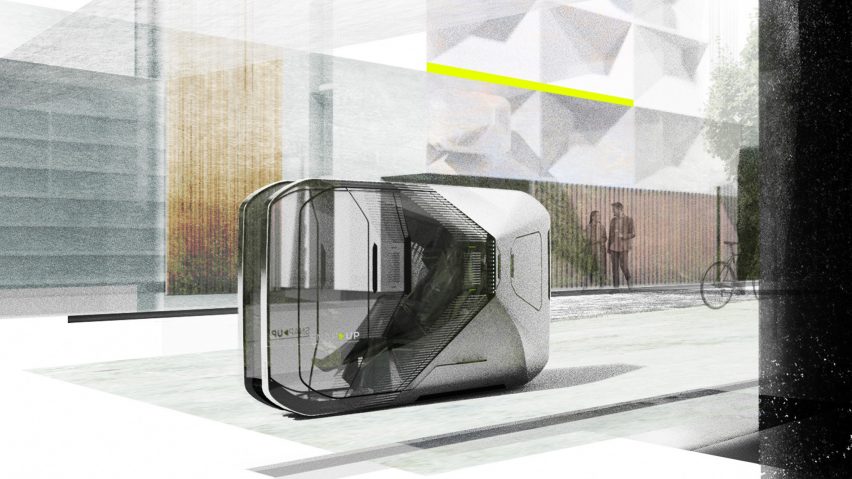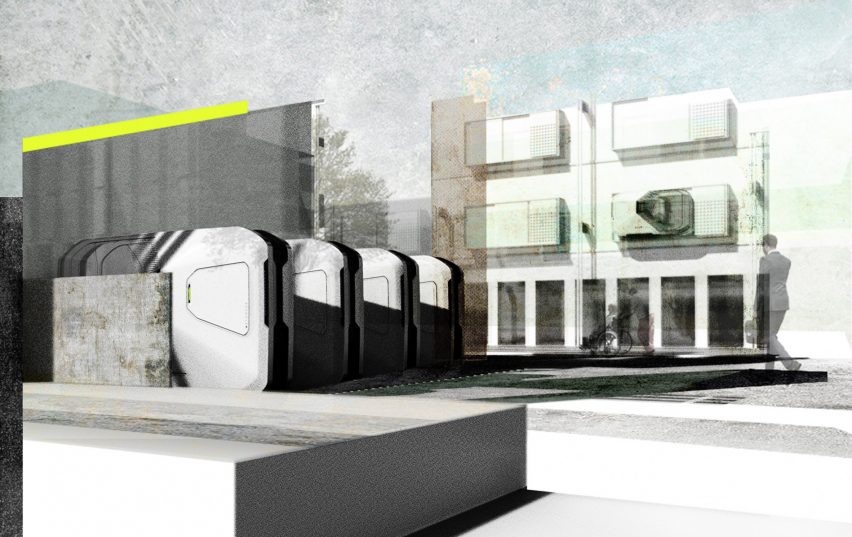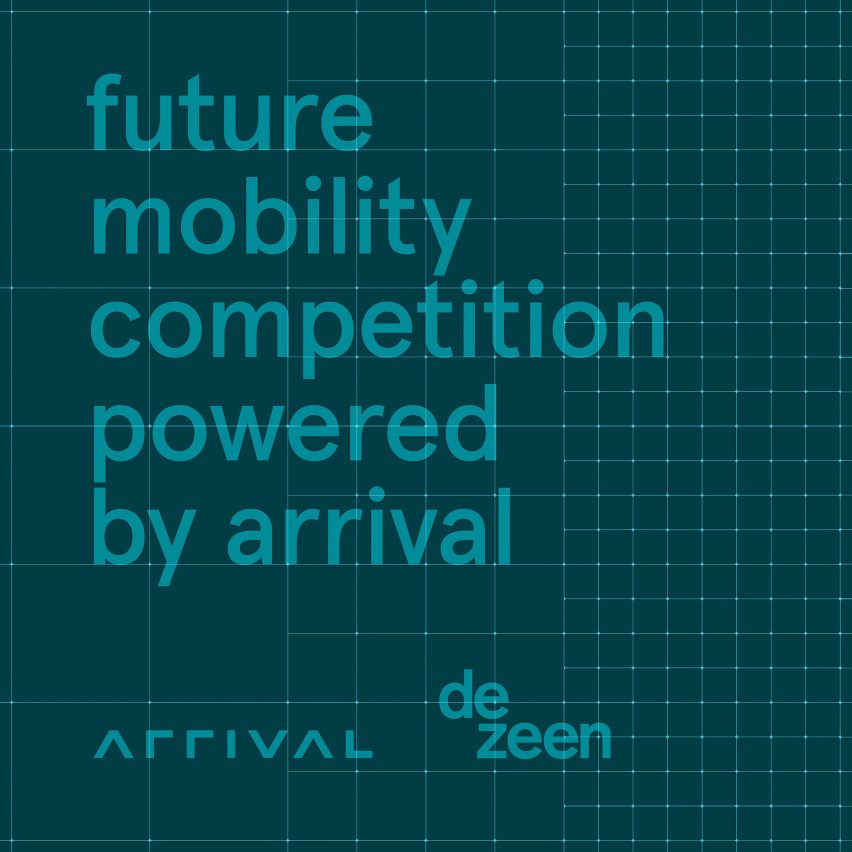
Lars Riemann envisions autonomous single-seater vehicles that can park vertically to save space
Lars Riemann has designed an autonomous car with an extremely narrow footprint that can be latched onto a building's exterior to save space for Dezeen's Future Mobility Competition powered by Arrival.
Called Snap Up, the concept was designed for densely populated urban areas with many high-rise buildings, such as Seoul.
The cars can be stacked vertically alongside each other on the street or can be attached to the facade of residential buildings, further extending the living space within each home. The all-round glazing of the vehicle is designed to enhance views that would otherwise not be visible.
While the vehicle would be built for low-speed inner-city journeys for single passengers, it can be "snapped" onto different public transportation services such as a hyperloop train or a future air mobility solution for longer distances.
This is intended to create a seamless travel experience, negating the need for multiple transfers between different types of transport.
A rubber chain drive would enable the vehicle to be used on varying terrain. Its low soil impact means it can be driven over grass, which could, in turn, lead to a new approach to city planning in which asphalt surfaces are discarded in favour of rewilding and returning green spaces in metropolises.
Read more about the proposal below:

Snap Up
Lars Riemann
Pforzheim, Germany
Finalist
"While a car spends more than 95 per cent of its lifetime parked, it also takes up an average of about 12-square-metres of space during that time. The megatrend of urbanisation will continue to increase in the future, and with less and less space available.
"This problem is already visible today, especially in Asia. Seoul is one of the cities with the highest number of high-rise buildings and there is no end in sight.
"Since Snap Up is a level-five autonomous vehicle, commuting time can be used sensibly for relaxing or working.
"The average car occupancy is around 1.5 people, meaning the extra four unused seats waste valuable public space. There is still a great urge for individual mobility in society, which has been reinforced by the covid pandemic.
"Therefore, my vehicle is designed as a single-seater vehicle. It consists of comparatively few parts and does not require any conventional car factories for production.
"The two surrounding frames provide the basis to which all other parts can be attached as in a plug-in system.
"While the exterior is integrated into the house facade through the architectural approach, the individually deformable interior enables interaction with the private living space. This means that additional usable living space can be created.
"By elevating the entire vehicle, vertical parking also helps to create a whole new user experience, which will be an increasingly important point, especially in the future."

Future Mobility Competition
The Future Mobility Competition is a global design contest that seeks to support emerging talent, bringing radical solutions to solve mobility challenges in cities and, in turn, create true sustainability and empower local communities.
Launched in partnership with electric vehicle company Arrival, the contest asked entrants to identify problems with mobility in their city, or a city they are familiar with, and propose solutions that will improve how people move around their environment.
The contest received over 170 entries from more than 45 different countries around the world.
The entries were assessed by a judging panel comprising Kunlé Adeyemi of architecture, design and urbanism studio NLÉ, Elizabeth Diller of New York studio Diller Scofidio + Renfro, Yves Béhar of Fuseproject, Jeremy Offer and Martina Wierzbicki from Arrival, as well as Marcus Fairs and Cajsa Carlson from Dezeen.
The panel selected 10 proposals as finalists to be published on Dezeen. We are unveiling one finalist a day from 27 June, culminating in the winner being announced on 8 July.
The winner will win the top prize of $25,000, while the runner-up will receive $15,000 and the third-placed entrant will receive $10,000. Each of the seven remaining finalists will receive prize money of $5,000.
Find out more about the Future Mobility Competition ›
See all the finalists revealed so far ›
Partnership content
The Future Mobility Competition powered by Arrival is a partnership between Dezeen and Arrival. Find out more about Dezeen partnership content here.